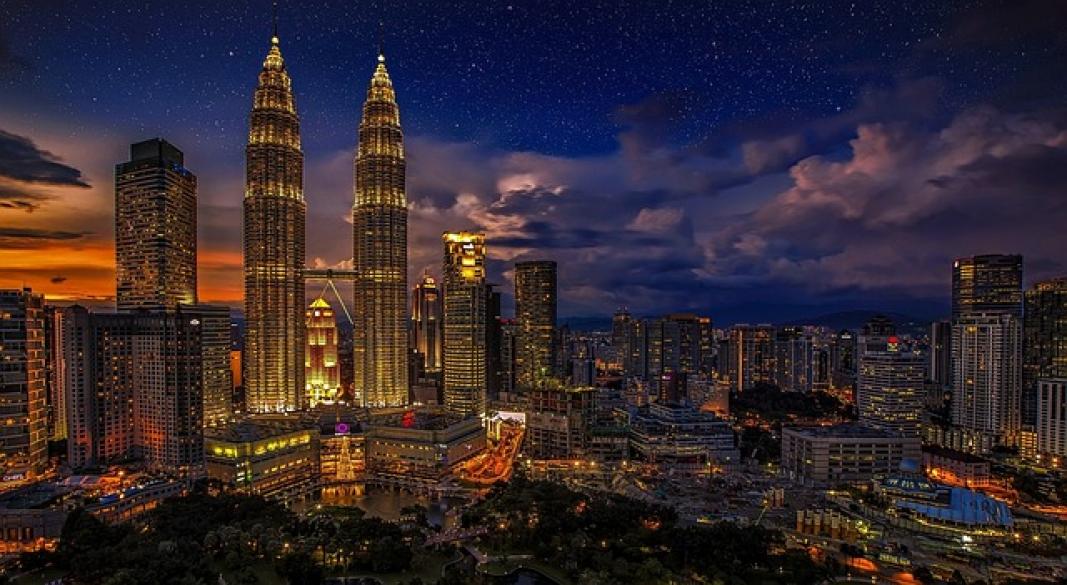


In an increasingly visual world, photography has evolved far beyond a hobby—it has become a powerful tool of connection, identity, and even resistance. From the alleyways of Marrakech to the streets of Tokyo, people around the globe are using photography to capture their realities, share their truths, and reimagine how we see the world. In 2025, the art of photography is no longer limited to professionals or those with expensive equipment. With powerful cameras embedded in nearly every smartphone and editing apps accessible to all, the global population has become a generation of storytellers. A New Language of Expression Photography has become the most universal visual language—transcending borders, politics, and even spoken words. A single image can spark movements, ignite conversations, and bring attention to marginalized voices. From the war-torn zones of Gaza and Ukraine to peaceful protests in Europe and climate marches in South America, everyday citizens are documenting history in real time. These raw, unfiltered images often make their way to global audiences faster than traditional news media. "The smartphone is the new pen," says French photojournalist Camille Laurent. "People don’t just take photos—they share their worldviews." The Rise of Visual Identity In cities like New York, Seoul, and Berlin, photography has become deeply intertwined with personal branding. On platforms like Instagram and Threads, visuals are the currency of influence. Whether it’s fashion, travel, activism, or mental health, photography is the lens through which individuals craft and project their identity. This has also sparked a global aesthetic—where minimalist cafes in Istanbul resemble those in Paris, and sunlit "golden hour" selfies are universal. Yet within this visual sameness, cultural uniqueness is also being celebrated. Photographers are reclaiming their heritage—using traditional attire, rural landscapes, and local rituals to tell stories that challenge stereotypes and global homogenization. AI, Ethics & The Future As artificial intelligence blends with photography, questions of ethics and authenticity are surfacing. AI-generated portraits and edited realities raise concerns about truth, body image, and media manipulation. Yet, at the same time, AI tools are empowering more people to create stunning visuals without formal training—democratizing creativity in ways never imagined. "We’re entering an era where the line between photography and digital art is blurring," notes Japanese visual artist Rei Nakamura. "But the emotion behind the image still matters most." A Global Bond In refugee camps in Jordan, schoolchildren are given disposable cameras to capture their lives. In Scandinavian forests, nature photographers use drones to document wildlife. On African coastlines, photographers are preserving indigenous stories that were never written down. Despite the diversity of context, one thing is clear: photography connects humanity. It offers empathy. It builds bridges. In the words of American photographer Dorothea Lange, "Photography takes an instant out of time, altering life by holding it still." And today, more than ever, the world is watching—frame by frame.
A dramatic wave of realignment is sweeping across collegiate athletics, as major programs abandon long-standing conferences in search of lucrative media deals and expanded playoff opportunities. The Big Ten, SEC, and Big 12 have absorbed schools from coast to coast, leaving once-stable institutions like the Pac-12 fractured. These moves are dissolving historic rivalries and reshaping the identity of college sports, sparking backlash from fans and alumni who lament the loss of tradition for the sake of revenue. Athlete Compensation Enters Legal Crosshairs The fight over athlete compensation has reached new legal heights. Ongoing lawsuits and federal reviews are challenging the NCAA’s amateurism model, with growing momentum behind classifying student-athletes as employees. Courts are also examining whether colleges owe athletes additional protections under labor law. The decisions expected in the coming months could open the door for direct salaries, unionization, and broader benefits, potentially redefining the student-athlete experience. Nzme, Image, and Likeness (NIL) Continues to Evolve The NIL era is maturing rapidly, with student-athletes now securing multi-million-dollar endorsement deals and building personal brands through social media and sponsorships. However, the lack of federal regulation has led to inconsistencies across states and programs, creating confusion and competitive imbalance. Schools are scrambling to develop compliance frameworks, while Congress considers national legislation to bring uniformity to NIL rights and prevent further chaos in collegiate recruiting. Governance Reform Sparks Power Struggles As the NCAA faces mounting criticism over its authority and effectiveness, calls for governance reform are intensifying. Some schools and conferences are pushing for a breakaway model that would grant elite programs more autonomy. Others advocate for a decentralized system with regional control and athlete representation. The ongoing debates reflect deeper tensions about who controls college sports—and whether the current system can survive the era of big business and player empowerment. The Future: Toward a Professionalized College Sports Model? These combined shifts are pointing college sports toward a more professionalized future. As legal, financial, and structural pressures build, the once-clear line between amateur and professional athletics continues to blur. Whether through collective bargaining, conference-led governance, or direct payment, the landscape is evolving at a historic pace. What was once student-centered competition is now a billion-dollar industry confronting its identity—and rewriting its rules in real time.
In a moment steeped in franchise heritage, the Washington Commanders announced they will be retiring Hall‑of‑Famer Art Monk’s No. 81 jersey during their Week 9 home game against the Seattle Seahawks. The ceremony will feature "Super Bowl Era" alternate uniforms, a tribute befitting the receiver whose 940 catches and nearly 13,000 receiving yards remain Washington’s all‑time record. As the franchise honours its past, a tense negotiation unfolds in the present. Terry McLaurin, entering the final season of his six‑year, $68 million contract, has publicly voiced frustration over delays in extension talks. With five straight 1,000‑yard seasons behind him, McLaurin insists on compensation befitting an elite NFL receiver. His vocal discontent has sparked concerns among fans and analysts—many urging the front office to resolve the matter before training camp to avoid derailment during the 2025 season. Adding further intrigue, linebacker Frankie Luvu earned recognition as the No. 5 off‑ball linebacker in ESPN's 2025 rankings thanks to an outstanding 2024 campaign featuring eight sacks, 12 tackles for loss, and second‑team All‑Pro honours. Hogs Haven His rise signals that while the Commanders honour legends, new standout performances are reshaping the team’s identity. Legal and competitive landscapes also simmer as the Mountain West and Pac‑12 conferences prepare for litigation over unresolved legal disputes, possibly reshaping college athletics governance. Meanwhile, the "Moneyball" model is making waves—Texas Tech and others are strategically investing to level the playing field, exploring salary caps and compensation structuring, including tactics like backloading deals to stay competitive. The Times of India Hogs Haven The Falcoholic Mountain West Connection Into this evolving narrative, college football continues to produce standout professionals—players like Murf Gray, Jack Anker, and Aidan Cremarosa were recently drafted in the 2025 MLB Draft, underscoring the conference’s rising talent pipeline. Mountain West Connection This convergence of legacy celebration, player valuation, emerging defensive stars, and institutional transformation epitomises a franchise and sport in transition. The Commanders face critical decisions—balancing reverence for legends like Monk with the urgency of retaining top talent like McLaurin and building a competitive roster around rising standouts like Luvu. As training camps loom, how these storylines unfold—contract resolution, offensive versus defensive leadership, legal disputes in collegiate sport, and institutional competitiveness—will shape the trajectory not only of the Commanders organisation but also the broader narrative of American football in 2025.
In an increasingly visual world, photography has evolved far beyond a hobby—it has become a powerful tool of connection, identity, and even resistance. From the alleyways of Marrakech to the streets of Tokyo, people around the globe are using photography to capture their realities, share their truths, and reimagine how we see the world. In 2025, the art of photography is no longer limited to professionals or those with expensive equipment. With powerful cameras embedded in nearly every smartphone and editing apps accessible to all, the global population has become a generation of storytellers. A New Language of Expression Photography has become the most universal visual language—transcending borders, politics, and even spoken words. A single image can spark movements, ignite conversations, and bring attention to marginalised voices. From the war-torn zones of Gaza and Ukraine to peaceful protests in Europe and climate marches in South America, everyday citizens are documenting history in real time. These raw, unfiltered images often make their way to global audiences faster than traditional news media. "The smartphone is the new pen," says French photojournalist Camille Laurent. "People don’t just take photos—they share their worldviews." The Rise of Visual Identity In cities like New York, Seoul, and Berlin, photography has become deeply intertwined with personal branding. On platforms like Instagram and Threads, visuals are the currency of influence. Whether it’s fashion, travel, activism, or mental health, photography is the lens through which individuals craft and project their identity. This has also sparked a global aesthetic—where minimalist cafes in Istanbul resemble those in Paris, and sunlit "golden hour" selfies are universal. Yet within this visual sameness, cultural uniqueness is also being celebrated. Photographers are reclaiming their heritage—using traditional attire, rural landscapes, and local rituals to tell stories that challenge stereotypes and global homogenisation. AI, Ethics & The Future As artificial intelligence blends with photography, questions of ethics and authenticity are surfacing. AI-generated portraits and edited realities raise concerns about truth, body image, and media manipulation. Yet, at the same time, AI tools are empowering more people to create stunning visuals without formal training—democratising creativity in ways never imagined. "We're entering an era where the line between photography and digital art is blurring," notes Japanese visual artist Rei Nakamura. "But the emotion behind the image still matters most." A Global Bond In refugee camps in Jordan, schoolchildren are given disposable cameras to capture their lives. In Scandinavian forests, nature photographers use drones to document wildlife. On African coastlines, photographers are preserving indigenous stories that were never written down. Despite the diversity of context, one thing is clear: photography connects humanity. It offers empathy. It builds bridges. In the words of American photographer Dorothea Lange, "Photography takes an instant out of time, altering life by holding it still." And today, more than ever, the world is watching—frame by frame.

The United States has long been known as a nation of immigrants and diversity. Over the last century, significant demographic changes have occurred due to immigration patterns, birth rates, cultural shifts, and changing social values. This report outlines how the racial, regional, religious, and national origin composition of the U.S. population has evolved — and where it’s heading. Table 1: U.S. Population by Race/Ethnicity (1960–2024) Year White (Non-Hispanic) Black Hispanic/Latino Asian Native American Multiracial Other 1960 85% 10.5% 3.5% 0.5% 0.3% — 0.2% 1980 80% 11.5% 6.4% 1.5% 0.6% — 0.3% 2000 69% 12.3% 12.5% 3.6% 0.9% 2.4% 0.3% 2020 59.3% 13.4% 18.5% 5.9% 1.3% 2.8% 0.1% 2024* 57.1% 13.2% 19.1% 6.5% 1.4% 3.1% 0.2% Over the last six decades, the regional distribution of the U.S. population has undergone a substantial transformation. Economic shifts, climate preferences, and immigration patterns have contributed to the steady rise of the South and West as the primary hubs of growth, while the Northeast and Midwest have seen their shares of the national population gradually decline. The United States Census Bureau divides the country into four main regions: Northeast, Midwest, South, and West. Over the past several decades, regional population distribution has shifted significantly due to migration trends, job availability, climate preferences, and immigration. Table 2: Regional Population Distribution (by U.S. Census Regions) Region 1960 1980 2000 2020 2024 (Est.) Northeast 25% 22% 19% 17% 16.5% Midwest 29% 27% 23% 20% 19.7% South 31% 34% 36% 38% 39.2% West 15% 17% 22% 25% 24.6% Key Takeaway: The South and West have seen consistent growth due to warmer climates, job markets, and immigration hubs (e.g., Texas, Florida, California). The religious landscape of the United States has undergone a dramatic transformation over the past 70 years. While the country once identified overwhelmingly as Christian — particularly Protestant — more Americans today are choosing no religious affiliation, a trend that reflects shifting cultural norms, generational change, and growing diversity. Demography by religion Religion 1950 1980 2000 2020 2024 (Est.) Protestant 69% 56% 51% 40% 39% Catholic 25% 27% 24% 21% 20% Jewish 3% 2.5% 2% 1.8% 1.8% Muslim <0.1% 0.5% 1% 1.3% 1.5% Hindu/Buddhist <0.1% 0.5% 1.5% 2% 2.2% Unaffiliated 2% 7% 15% 27% 29% Key Shift: The rise of the “nones” (religiously unaffiliated) is among the most dramatic religious shifts in recent history. Immigration has always been a cornerstone of the American story. But over the past 60 years, the origins of the U.S. foreign-born population have changed dramatically — shifting from a Europe-dominated pattern to one led by Latin America, Asia, and more recently, Africa. These demographic transformations reflect both global trends and U.S. immigration policy reforms. Summary Insights Racial Diversity Growing Rapidly: Non-Hispanic Whites are no longer a supermajority. By 2045, the U.S. is projected to be “minority-majority.” Regional Power Shift: The South and West are economic and population growth engines. Religious Landscape is Secularizing: Protestants and Catholics are declining; the religiously unaffiliated are growing fastest. Immigration Patterns Have Shifted: From European-dominated to Latin American and Asian-majority since 1965’s Immigration and Nationality Act.
The U.S. Supreme Court issued a landmark ruling on Monday, declaring that former presidents are entitled to partial immunity from criminal prosecution for actions taken while in office. The 6-3 decision, split along ideological lines, has triggered intense political and legal debate across the country.The ruling stems from charges brought against former President Donald Trump, who has faced multiple indictments related to alleged interference in the 2020 presidential election and events surrounding the January 6 Capitol riot. The Court’s decision now makes it more difficult for prosecutors to pursue charges for actions deemed as part of a president's official duties. Divided Reactions President Joe Biden responded to the ruling by calling it a “dangerous precedent” that could place future presidents above the law. “No one in America should be beyond accountability,” he said during a press conference.Republican leaders, however, welcomed the decision. House Speaker Steve Scalise stated, “This ruling upholds the constitutional separation of powers and protects the office of the presidency from political attacks.”The recent Supreme Court ruling on presidential immunity has ignited intense debate across the United States, with sharp divisions emerging among legal experts, lawmakers, and the public. The decision, which sets new boundaries on the legal protections afforded to sitting presidents, has far-reaching implications for the balance of power and accountability in government. Supporters argue that the ruling upholds the integrity of the executive office by protecting it from politically motivated prosecutions, while critics warn that it could open the door to unchecked presidential authority. What the Ruling Means The Court ruled that while presidents do not have absolute immunity, they are shielded from criminal prosecution for actions that are “within the outer perimeter of official presidential responsibilities.” However, personal or unofficial actions remain subject to prosecution.Legal experts say the ruling could delay several of Trump’s ongoing legal cases, potentially impacting the 2024 election season, where Trump remains the leading Republican contender. As protests, press conferences, and panel discussions erupt nationwide, the ruling is expected to influence upcoming elections and reshape the legal landscape surrounding executive power for years to come. Public Response The recent Supreme Court ruling on presidential immunity has ignited intense debate across the United States, with sharp divisions emerging among legal experts, lawmakers, and the public. The decision, which sets new boundaries on the legal protections afforded to sitting presidents, has far-reaching implications for the balance of power and accountability in government. Supporters argue that the ruling upholds the integrity of the executive office by protecting it from politically motivated prosecutions, while critics warn that it could open the door to unchecked presidential authority. As protests, press conferences, and panel discussions erupt nationwide, the ruling is expected to influence upcoming elections and reshape the legal landscape surrounding executive power for years to come.
Colombo, July 1, 2025 — In a dramatic electoral upset that signals a new era in Sri Lankan politics, the United Democratic Alliance (UDA) has swept to power, dethroning the long-dominant ruling coalition in the 2025 General Elections. The victory paves the way for Anura Desilva to assume office as Prime Minister, riding a wave of public discontent over economic turmoil, corruption allegations, and youth frustration. Election Overview The UDA’s decisive win marks the first change in central leadership in over 12 years, breaking the stronghold of the United People’s Coalition (UPC), led by outgoing Prime Minister Dilan Jayawardene. According to the Election Commission of Sri Lanka, voter turnout hit a record 78%, with unusually high participation from first-time voters and the 18–30 age demographic. Youth-driven campaigns and social media engagement were central to the UDA's momentum, particularly in urban centers such as Colombo, Kandy, and Galle. Parliamentary Seat Distribution – 2025 General Election Political Party Seats Won Change from 2020 Vote Share (%) United Democratic Alliance (UDA) 132 +47 46.2% United People’s Coalition (UPC) 87 -52 34.1% National People’s Front (NPF) 18 +5 9.7% Tamil Unity Alliance (TUA) 12 0 6.3% Others / Independents 6 0 3.7% Total Seats 255 — 100% Key Factors Behind the UDA Victory Sri Lanka has faced persistent inflation, currency devaluation, and foreign debt pressures in recent years. The UDA campaigned on a bold plan to revitalize the economy, promising foreign investment reforms, reduced import dependency, and job creation for youth. Desilva’s repeated calls for government transparency and clean politics resonated with voters weary of high-profile corruption scandals linked to the outgoing administration. The UDA’s tech-savvy approach—leveraging social media, virtual town halls, and influencer-led content—connected with younger demographics and the urban middle class. A Peaceful Transition Amid International Applause Prime Minister Dilan Jayawardene, who had held the post since 2013, gracefully conceded defeat late Tuesday evening. In a televised statement, he said: “The people have spoken clearly and decisively. I urge all parties to support a peaceful transfer of power and wish Prime Minister-designate Anura Desilva all success.” Global leaders, including Indian Prime Minister Priya Mehta, EU President Claudia Sørensen, and U.S. President Mark Gonzalez, issued swift congratulatory messages. The United Nations and Commonwealth Election Monitoring Group both commended the election for being “free, fair, and well-administered.” What’s Next for the New Government Forming an Independent Anti-Corruption Task Force Renegotiating foreign debt terms with IMF and China Unveiling a National Employment Stimulus Package Reforming education and digital infrastructure Introducing legislation for media freedom and civil rights protections Public Sentiment and Expert Views On the streets of Colombo and in rural towns alike, the mood is one of cautious optimism.“I didn’t expect this result, but I’m happy,” said Kavindi Jayasuriya, a 22-year-old voter in Gampaha. “We need new faces, new thinking. I just hope they follow through.” Political analysts have described the result as a “tectonic shift” that could reshape Sri Lanka’s governance model. Dr. Nalaka Perera, a political science professor at the University of Peradeniya, noted: “This election marks a generational change. Voters demanded accountability, and the system delivered. If Desilva keeps his promises, this could be a pivotal turning point.” Conclusion: Winds of Change As Sri Lanka turns the page on an entrenched political chapter, expectations are soaring. The new administration inherits a fragile economy and deep institutional challenges but also carries a powerful mandate from a hopeful electorate.Whether the UDA’s sweeping victory leads to lasting reform or stumbles under the weight of its promises remains to be seen. For now, though, Sri Lanka basks in the glow of democratic renewal, and the world watches closely as a new chapter begins.
Dhaka, July 1, 2025 — In a major political development, Prime Minister Sheikh Amin announced a cabinet reshuffle today, appointing five new ministers and reassigning key portfolios in what officials say is a move to accelerate ongoing economic reforms. The Finance Ministry will now be led by veteran economist Dr. Rezaul Karim, while the Ministry of Commerce goes to rising political figure Nasima Haque, marking a notable generational shift in leadership. The reshuffle comes amid public pressure for stronger governance, job creation, and inflation control. Opposition parties have criticized the move, calling it "cosmetic," while analysts suggest it signals a strategic repositioning ahead of the 2026 general elections. The Prime Minister emphasized that the changes aim to "prioritize accountability, efficiency, and public service delivery." Cabinet members are expected to take oath at the Presidential Palace tomorrow morning.
Global stock markets remained mixed today as investors weighed fresh U.S. inflation data, corporate earnings reports, and the ongoing economic uncertainty in China and Europe. The U.S. stock market opened slightly higher on Monday morning, with the Dow Jones Industrial Average rising 0.4%, the S&P 500 climbing 0.3%, and the Nasdaq Composite gaining 0.5% in early trading. Investors responded positively to June's U.S. Consumer Price Index (CPI) report, which showed inflation cooling slightly to an annual rate of 3.0%, down from 3.3% in May."Markets are optimistic that the Federal Reserve may pause or even cut interest rates by the fall," said Lisa Raymond, chief analyst at Morgan & Co. "But it's still a wait-and-see situation, especially with more earnings coming this week." Wall Street Opens Higher Dow +0.4%, S&P 500 +0.3%, Nasdaq +0.5% on Monday morning. Boosted by June CPI showing inflation cooled to 3.0% (down from 3.3%). Hopes rise for potential Fed rate cut or pause by fall. The U.S. stock market opened slightly higher on Monday morning, with the Dow Jones Industrial Average rising 0.4%, the S&P 500 climbing 0.3%, and the Nasdaq Composite gaining 0.5% in early trading. Investors responded positively to June's U.S. Consumer Price Index (CPI) report, which showed inflation cooling slightly to an annual rate of 3.0%, down from 3.3% in May. "Markets are optimistic that the Federal Reserve may pause or even cut interest rates by the fall," said Lisa Raymond, chief analyst at Morgan & Co. "But it's still a wait-and-see situation, especially with more earnings coming this week." Tech Leads the Way Technology stocks led the gains in the U.S., with Apple (AAPL) up 1.8% and Nvidia (NVDA) jumping 2.4%, as demand for AI and semiconductors remains strong. Tesla (TSLA) also rebounded, rising 3.1% after announcing better-than-expected Q2 vehicle deliveries. Global stock markets showed a mixed performance as investors weighed persistent inflation concerns against a wave of corporate earnings reports. While strong results from major tech companies helped lift some indexes, uncertainty surrounding central bank policies and the future path of interest rates kept others in check. In the U.S., Europe Struggles on Growth Concerns Meanwhile, European markets showed little movement, with the FTSE 100 in London flat and Germany’s DAX down 0.2%. Investors remain concerned about weak industrial output and rising energy costs across the Eurozone.“The European economy is showing signs of fatigue,” said Carla Dupont, economist at BNP Paribas. “High borrowing costs and geopolitical tensions are dragging down business activity.”Global stock markets showed a mixed performance as investors weighed persistent inflation concerns against a wave of corporate earnings reports. While strong results from major tech companies helped lift some indexes, uncertainty surrounding central bank policies and the future path of interest rates kept others in check. In the U.S., Market Performance Summary Table Region Index/Company Movement (%) Key Driver USA Dow Jones +0.4% Positive CPI report (3.0% inflation) S&P 500 +0.3% Rate cut optimism Nasdaq +0.5% Tech stock gains Apple (AAPL) +1.8% Strong AI demand Nvidia (NVDA) +2.4% Semiconductor growth Tesla (TSLA) +3.1% Strong Q2 deliveries Europe FTSE 100 (UK) 0.0% Flat due to economic uncertainty DAX (Germany) -0.2% Weak industrial output, high energy costs Asia Nikkei 225 (Japan) +0.6% Strong export performance Shanghai Composite -1.2% Property sector risks, low consumer spending Asia Mixed as Chinese Markets Slump In Asia, markets showed mixed results. Japan’s Nikkei 225 gained 0.6%, supported by strong export data. However, Chinese markets fell sharply, with the Shanghai Composite down 1.2%, as fears about the country’s property sector and sluggish consumer spending persisted. Gains in consumer and tech sectors pushed markets higher, but weaker-than-expected bank earnings and inflation-related jitters limited broader momentum. European markets edged lower as traders grew cautious about global trade tensions and slowing growth indicators, while Asian markets saw mixed results, with Hong Kong posting modest gains and Tokyo slipping slightly. Overall, market sentiment remains cautious as investors await further economic data and guidance from central banks. Looking Ahead Investors are now turning their focus to key corporate earnings this week from major banks like JPMorgan Chase, Goldman Sachs, and Citigroup, as well as tech giants like Netflix and Microsoft. The results are expected to provide a clearer picture of business resilience amid high interest rates and uncertain global demand. Overall, market sentiment remains cautious as investors await further economic data and guidance from central banks.
The United States has long been known as a nation of immigrants and diversity. Over the last century, significant demographic changes have occurred due to immigration patterns, birth rates, cultural shifts, and changing social values. This report outlines how the racial, regional, religious, and national origin composition of the U.S. population has evolved — and where it’s heading. Table 1: U.S. Population by Race/Ethnicity (1960–2024) Year White (Non-Hispanic) Black Hispanic/Latino Asian Native American Multiracial Other 1960 85% 10.5% 3.5% 0.5% 0.3% — 0.2% 1980 80% 11.5% 6.4% 1.5% 0.6% — 0.3% 2000 69% 12.3% 12.5% 3.6% 0.9% 2.4% 0.3% 2020 59.3% 13.4% 18.5% 5.9% 1.3% 2.8% 0.1% 2024* 57.1% 13.2% 19.1% 6.5% 1.4% 3.1% 0.2% Over the last six decades, the regional distribution of the U.S. population has undergone a substantial transformation. Economic shifts, climate preferences, and immigration patterns have contributed to the steady rise of the South and West as the primary hubs of growth, while the Northeast and Midwest have seen their shares of the national population gradually decline. The United States Census Bureau divides the country into four main regions: Northeast, Midwest, South, and West. Over the past several decades, regional population distribution has shifted significantly due to migration trends, job availability, climate preferences, and immigration. Table 2: Regional Population Distribution (by U.S. Census Regions) Region 1960 1980 2000 2020 2024 (Est.) Northeast 25% 22% 19% 17% 16.5% Midwest 29% 27% 23% 20% 19.7% South 31% 34% 36% 38% 39.2% West 15% 17% 22% 25% 24.6% Key Takeaway: The South and West have seen consistent growth due to warmer climates, job markets, and immigration hubs (e.g., Texas, Florida, California). The religious landscape of the United States has undergone a dramatic transformation over the past 70 years. While the country once identified overwhelmingly as Christian — particularly Protestant — more Americans today are choosing no religious affiliation, a trend that reflects shifting cultural norms, generational change, and growing diversity. Demography by religion Religion 1950 1980 2000 2020 2024 (Est.) Protestant 69% 56% 51% 40% 39% Catholic 25% 27% 24% 21% 20% Jewish 3% 2.5% 2% 1.8% 1.8% Muslim <0.1% 0.5% 1% 1.3% 1.5% Hindu/Buddhist <0.1% 0.5% 1.5% 2% 2.2% Unaffiliated 2% 7% 15% 27% 29% Key Shift: The rise of the “nones” (religiously unaffiliated) is among the most dramatic religious shifts in recent history. Immigration has always been a cornerstone of the American story. But over the past 60 years, the origins of the U.S. foreign-born population have changed dramatically — shifting from a Europe-dominated pattern to one led by Latin America, Asia, and more recently, Africa. These demographic transformations reflect both global trends and U.S. immigration policy reforms. Summary Insights Racial Diversity Growing Rapidly: Non-Hispanic Whites are no longer a supermajority. By 2045, the U.S. is projected to be “minority-majority.” Regional Power Shift: The South and West are economic and population growth engines. Religious Landscape is Secularizing: Protestants and Catholics are declining; the religiously unaffiliated are growing fastest. Immigration Patterns Have Shifted: From European-dominated to Latin American and Asian-majority since 1965’s Immigration and Nationality Act.
Global stock markets remained mixed today as investors weighed fresh U.S. inflation data, corporate earnings reports, and the ongoing economic uncertainty in China and Europe. The U.S. stock market opened slightly higher on Monday morning, with the Dow Jones Industrial Average rising 0.4%, the S&P 500 climbing 0.3%, and the Nasdaq Composite gaining 0.5% in early trading. Investors responded positively to June's U.S. Consumer Price Index (CPI) report, which showed inflation cooling slightly to an annual rate of 3.0%, down from 3.3% in May."Markets are optimistic that the Federal Reserve may pause or even cut interest rates by the fall," said Lisa Raymond, chief analyst at Morgan & Co. "But it's still a wait-and-see situation, especially with more earnings coming this week." Wall Street Opens Higher Dow +0.4%, S&P 500 +0.3%, Nasdaq +0.5% on Monday morning. Boosted by June CPI showing inflation cooled to 3.0% (down from 3.3%). Hopes rise for potential Fed rate cut or pause by fall. The U.S. stock market opened slightly higher on Monday morning, with the Dow Jones Industrial Average rising 0.4%, the S&P 500 climbing 0.3%, and the Nasdaq Composite gaining 0.5% in early trading. Investors responded positively to June's U.S. Consumer Price Index (CPI) report, which showed inflation cooling slightly to an annual rate of 3.0%, down from 3.3% in May. "Markets are optimistic that the Federal Reserve may pause or even cut interest rates by the fall," said Lisa Raymond, chief analyst at Morgan & Co. "But it's still a wait-and-see situation, especially with more earnings coming this week." Tech Leads the Way Technology stocks led the gains in the U.S., with Apple (AAPL) up 1.8% and Nvidia (NVDA) jumping 2.4%, as demand for AI and semiconductors remains strong. Tesla (TSLA) also rebounded, rising 3.1% after announcing better-than-expected Q2 vehicle deliveries. Global stock markets showed a mixed performance as investors weighed persistent inflation concerns against a wave of corporate earnings reports. While strong results from major tech companies helped lift some indexes, uncertainty surrounding central bank policies and the future path of interest rates kept others in check. In the U.S., Europe Struggles on Growth Concerns Meanwhile, European markets showed little movement, with the FTSE 100 in London flat and Germany’s DAX down 0.2%. Investors remain concerned about weak industrial output and rising energy costs across the Eurozone.“The European economy is showing signs of fatigue,” said Carla Dupont, economist at BNP Paribas. “High borrowing costs and geopolitical tensions are dragging down business activity.”Global stock markets showed a mixed performance as investors weighed persistent inflation concerns against a wave of corporate earnings reports. While strong results from major tech companies helped lift some indexes, uncertainty surrounding central bank policies and the future path of interest rates kept others in check. In the U.S., Market Performance Summary Table Region Index/Company Movement (%) Key Driver USA Dow Jones +0.4% Positive CPI report (3.0% inflation) S&P 500 +0.3% Rate cut optimism Nasdaq +0.5% Tech stock gains Apple (AAPL) +1.8% Strong AI demand Nvidia (NVDA) +2.4% Semiconductor growth Tesla (TSLA) +3.1% Strong Q2 deliveries Europe FTSE 100 (UK) 0.0% Flat due to economic uncertainty DAX (Germany) -0.2% Weak industrial output, high energy costs Asia Nikkei 225 (Japan) +0.6% Strong export performance Shanghai Composite -1.2% Property sector risks, low consumer spending Asia Mixed as Chinese Markets Slump In Asia, markets showed mixed results. Japan’s Nikkei 225 gained 0.6%, supported by strong export data. However, Chinese markets fell sharply, with the Shanghai Composite down 1.2%, as fears about the country’s property sector and sluggish consumer spending persisted. Gains in consumer and tech sectors pushed markets higher, but weaker-than-expected bank earnings and inflation-related jitters limited broader momentum. European markets edged lower as traders grew cautious about global trade tensions and slowing growth indicators, while Asian markets saw mixed results, with Hong Kong posting modest gains and Tokyo slipping slightly. Overall, market sentiment remains cautious as investors await further economic data and guidance from central banks. Looking Ahead Investors are now turning their focus to key corporate earnings this week from major banks like JPMorgan Chase, Goldman Sachs, and Citigroup, as well as tech giants like Netflix and Microsoft. The results are expected to provide a clearer picture of business resilience amid high interest rates and uncertain global demand. Overall, market sentiment remains cautious as investors await further economic data and guidance from central banks.
The U.S. Supreme Court issued a landmark ruling on Monday, declaring that former presidents are entitled to partial immunity from criminal prosecution for actions taken while in office. The 6-3 decision, split along ideological lines, has triggered intense political and legal debate across the country.The ruling stems from charges brought against former President Donald Trump, who has faced multiple indictments related to alleged interference in the 2020 presidential election and events surrounding the January 6 Capitol riot. The Court’s decision now makes it more difficult for prosecutors to pursue charges for actions deemed as part of a president's official duties. Divided Reactions President Joe Biden responded to the ruling by calling it a “dangerous precedent” that could place future presidents above the law. “No one in America should be beyond accountability,” he said during a press conference.Republican leaders, however, welcomed the decision. House Speaker Steve Scalise stated, “This ruling upholds the constitutional separation of powers and protects the office of the presidency from political attacks.”The recent Supreme Court ruling on presidential immunity has ignited intense debate across the United States, with sharp divisions emerging among legal experts, lawmakers, and the public. The decision, which sets new boundaries on the legal protections afforded to sitting presidents, has far-reaching implications for the balance of power and accountability in government. Supporters argue that the ruling upholds the integrity of the executive office by protecting it from politically motivated prosecutions, while critics warn that it could open the door to unchecked presidential authority. What the Ruling Means The Court ruled that while presidents do not have absolute immunity, they are shielded from criminal prosecution for actions that are “within the outer perimeter of official presidential responsibilities.” However, personal or unofficial actions remain subject to prosecution.Legal experts say the ruling could delay several of Trump’s ongoing legal cases, potentially impacting the 2024 election season, where Trump remains the leading Republican contender. As protests, press conferences, and panel discussions erupt nationwide, the ruling is expected to influence upcoming elections and reshape the legal landscape surrounding executive power for years to come. Public Response The recent Supreme Court ruling on presidential immunity has ignited intense debate across the United States, with sharp divisions emerging among legal experts, lawmakers, and the public. The decision, which sets new boundaries on the legal protections afforded to sitting presidents, has far-reaching implications for the balance of power and accountability in government. Supporters argue that the ruling upholds the integrity of the executive office by protecting it from politically motivated prosecutions, while critics warn that it could open the door to unchecked presidential authority. As protests, press conferences, and panel discussions erupt nationwide, the ruling is expected to influence upcoming elections and reshape the legal landscape surrounding executive power for years to come.
In an increasingly visual world, photography has evolved far beyond a hobby—it has become a powerful tool of connection, identity, and even resistance. From the alleyways of Marrakech to the streets of Tokyo, people around the globe are using photography to capture their realities, share their truths, and reimagine how we see the world. In 2025, the art of photography is no longer limited to professionals or those with expensive equipment. With powerful cameras embedded in nearly every smartphone and editing apps accessible to all, the global population has become a generation of storytellers. A New Language of Expression Photography has become the most universal visual language—transcending borders, politics, and even spoken words. A single image can spark movements, ignite conversations, and bring attention to marginalised voices. From the war-torn zones of Gaza and Ukraine to peaceful protests in Europe and climate marches in South America, everyday citizens are documenting history in real time. These raw, unfiltered images often make their way to global audiences faster than traditional news media. "The smartphone is the new pen," says French photojournalist Camille Laurent. "People don’t just take photos—they share their worldviews." The Rise of Visual Identity In cities like New York, Seoul, and Berlin, photography has become deeply intertwined with personal branding. On platforms like Instagram and Threads, visuals are the currency of influence. Whether it’s fashion, travel, activism, or mental health, photography is the lens through which individuals craft and project their identity. This has also sparked a global aesthetic—where minimalist cafes in Istanbul resemble those in Paris, and sunlit "golden hour" selfies are universal. Yet within this visual sameness, cultural uniqueness is also being celebrated. Photographers are reclaiming their heritage—using traditional attire, rural landscapes, and local rituals to tell stories that challenge stereotypes and global homogenisation. AI, Ethics & The Future As artificial intelligence blends with photography, questions of ethics and authenticity are surfacing. AI-generated portraits and edited realities raise concerns about truth, body image, and media manipulation. Yet, at the same time, AI tools are empowering more people to create stunning visuals without formal training—democratising creativity in ways never imagined. "We're entering an era where the line between photography and digital art is blurring," notes Japanese visual artist Rei Nakamura. "But the emotion behind the image still matters most." A Global Bond In refugee camps in Jordan, schoolchildren are given disposable cameras to capture their lives. In Scandinavian forests, nature photographers use drones to document wildlife. On African coastlines, photographers are preserving indigenous stories that were never written down. Despite the diversity of context, one thing is clear: photography connects humanity. It offers empathy. It builds bridges. In the words of American photographer Dorothea Lange, "Photography takes an instant out of time, altering life by holding it still." And today, more than ever, the world is watching—frame by frame.






In an increasingly visual world, photography has evolved far beyond a hobby—it has become a powerful tool of connection, identity, and even resistance. From the alleyways of Marrakech to the streets of Tokyo, people around the globe are using photography to capture their realities, share their truths, and reimagine how we see the world. In 2025, the art of photography is no longer limited to professionals or those with expensive equipment. With powerful cameras embedded in nearly every smartphone and editing apps accessible to all, the global population has become a generation of storytellers. New Language of Expression Photography has become the most universal visual language—transcending borders, politics, and even spoken words. A single image can spark movements, ignite conversations, and bring attention to marginalized voices. From the war-torn zones of Gaza and Ukraine to peaceful protests in Europe and climate marches in South America, everyday citizens are documenting history in real time. These raw, unfiltered images often make their way to global audiences faster than traditional news media. "The smartphone is the new pen," says French photojournalist Camille Laurent. "People don’t just take photos—they share their worldviews." The Rise of Visual Identity In cities like New York, Seoul, and Berlin, photography has become deeply intertwined with personal branding. On platforms like Instagram and Threads, visuals are the currency of influence. Whether it’s fashion, travel, activism, or mental health, photography is the lens through which individuals craft and project their identity. This has also sparked a global aesthetic—where minimalist cafes in Istanbul resemble those in Paris, and sunlit "golden hour" selfies are universal. Yet within this visual sameness, cultural uniqueness is also being celebrated. Photographers are reclaiming their heritage—using traditional attire, rural landscapes, and local rituals to tell stories that challenge stereotypes and global homogenization. AI, Ethics & The Future As artificial intelligence blends with photography, questions of ethics and authenticity are surfacing. AI-generated portraits and edited realities raise concerns about truth, body image, and media manipulation. Yet, at the same time, AI tools are empowering more people to create stunning visuals without formal training—democratizing creativity in ways never imagined. "We’re entering an era where the line between photography and digital art is blurring," notes Japanese visual artist Rei Nakamura. "But the emotion behind the image still matters most." A Global Bond In refugee camps in Jordan, schoolchildren are given disposable cameras to capture their lives. In Scandinavian forests, nature photographers use drones to document wildlife. On African coastlines, photographers are preserving indigenous stories that were never written down. Despite the diversity of context, one thing is clear: photography connects humanity. It offers empathy. It builds bridges. In the words of American photographer Dorothea Lange, "Photography takes an instant out of time, altering life by holding it still." And today, more than ever, the world is watching—frame by frame.




In an increasingly visual world, photography has evolved far beyond a hobby—it has become a powerful tool of connection, identity, and even resistance. From the alleyways of Marrakech to the streets of Tokyo, people around the globe are using photography to capture their realities, share their truths, and reimagine how we see the world. In 2025, the art of photography is no longer limited to professionals or those with expensive equipment. With powerful cameras embedded in nearly every smartphone and editing apps accessible to all, the global population has become a generation of storytellers. A New Language of Expression Photography has become the most universal visual language—transcending borders, politics, and even spoken words. A single image can spark movements, ignite conversations, and bring attention to marginalized voices.From the war-torn zones of Gaza and Ukraine to peaceful protests in Europe and climate marches in South America, everyday citizens are documenting history in real time. These raw, unfiltered images often make their way to global audiences faster than traditional news media."The smartphone is the new pen," says French photojournalist Camille Laurent. "People don’t just take photos—they share their worldviews." The Rise of Visual Identity In cities like New York, Seoul, and Berlin, photography has become deeply intertwined with personal branding. On platforms like Instagram and Threads, visuals are the currency of influence. Whether it’s fashion, travel, activism, or mental health, photography is the lens through which individuals craft and project their identity. This has also sparked a global aesthetic—where minimalist cafes in Istanbul resemble those in Paris, and sunlit "golden hour" selfies are universal. Yet within this visual sameness, cultural uniqueness is also being celebrated. Photographers are reclaiming their heritage—using traditional attire, rural landscapes, and local rituals to tell stories that challenge stereotypes and global homogenization. AI, Ethics & The Future As artificial intelligence blends with photography, questions of ethics and authenticity are surfacing. AI-generated portraits and edited realities raise concerns about truth, body image, and media manipulation. Yet, at the same time, AI tools are empowering more people to create stunning visuals without formal training—democratizing creativity in ways never imagined. "We’re entering an era where the line between photography and digital art is blurring," notes Japanese visual artist Rei Nakamura. "But the emotion behind the image still matters most." A Global Bond In refugee camps in Jordan, schoolchildren are given disposable cameras to capture their lives. In Scandinavian forests, nature photographers use drones to document wildlife. On African coastlines, photographers are preserving indigenous stories that were never written down. Despite the diversity of context, one thing is clear: photography connects humanity. It offers empathy. It builds bridges. In the words of American photographer Dorothea Lange, "Photography takes an instant out of time, altering life by holding it still." And today, more than ever, the world is watching—frame by frame.




In today’s always-connected world, the concept of stepping away from digital devices has shifted from being a personal challenge to a luxury escape. More people, particularly high-earning professionals and frequent travelers, are now paying for the privilege of disconnecting. The digital detox—once a self-help buzzword—is becoming a high-end experience, offered by luxury resorts, remote lodges, and boutique wellness retreats.The demand for these escapes is growing because digital fatigue is real. On average, individuals check their smartphones over 100 times a day. Between emails, social media notifications, and constant pings from work chats, the pressure to remain available 24/7 is taking a toll on mental health. Many people report burnout, poor sleep, heightened anxiety, and even physical issues like eye strain and poor posture. As awareness grows around these effects, so too does the desire to unplug. Luxury hotels and retreat centers have taken notice. Instead of offering high-speed internet and smart TVs, these places are marketing silence, nature, and disconnection. Some resorts go as far as taking guests’ phones at check-in, offering lockboxes to prevent temptation. Others are located in areas without cell reception altogether, making digital access physically impossible. These experiences are no longer considered basic—they are seen as indulgent, even elite. This trend speaks to a broader cultural shift. In the past, luxury was defined by what you could access—fast internet, instant communication, high-tech devices. Now, it’s also about what you can avoid. To be unreachable, to have no signal, and to spend days without checking emails or social media updates has become a form of status. In fact, telling people you had no Wi-Fi on your vacation is almost a humblebrag in some circles. Aside from the appeal of exclusivity, digital detoxes offer real psychological benefits. People often report improved focus, reduced stress, better sleep, and deeper conversations with travel companions. Without the distraction of screens, guests reconnect with their surroundings, their thoughts, and each other. Even a short break—48 to 72 hours—can reset mental clarity and refresh energy levels. Many people return home more creative, more centered, and more in control of their digital habits. The rise of digital detox as a premium service also ties into the growing wellness economy. Alongside yoga, meditation, and clean eating, digital well-being is now a pillar of a healthy lifestyle. Wellness retreats and spas increasingly include offline activities such as journaling, hiking, forest bathing, or silent meals. The idea is not just to escape technology but to re-learn how to be present without it. Ultimately, digital detox is more than a travel trend—it’s a reflection of changing values. In an age where everything is optimized, connected, and efficient, choosing to slow down and unplug is not a step backward. It’s a deliberate, often expensive, choice to reclaim time, space, and peace of mind. In 2025, luxury is no longer about having everything—it’s about knowing when to shut it all off.






Global stock markets remained mixed today as investors weighed fresh U.S. inflation data, corporate earnings reports, and the ongoing economic uncertainty in China and Europe. The U.S. stock market opened slightly higher on Monday morning, with the Dow Jones Industrial Average rising 0.4%, the S&P 500 climbing 0.3%, and the Nasdaq Composite gaining 0.5% in early trading. Investors responded positively to June's U.S. Consumer Price Index (CPI) report, which showed inflation cooling slightly to an annual rate of 3.0%, down from 3.3% in May."Markets are optimistic that the Federal Reserve may pause or even cut interest rates by the fall," said Lisa Raymond, chief analyst at Morgan & Co. "But it's still a wait-and-see situation, especially with more earnings coming this week." Wall Street Opens Higher Dow +0.4%, S&P 500 +0.3%, Nasdaq +0.5% on Monday morning. Boosted by June CPI showing inflation cooled to 3.0% (down from 3.3%). Hopes rise for potential Fed rate cut or pause by fall. The U.S. stock market opened slightly higher on Monday morning, with the Dow Jones Industrial Average rising 0.4%, the S&P 500 climbing 0.3%, and the Nasdaq Composite gaining 0.5% in early trading. Investors responded positively to June's U.S. Consumer Price Index (CPI) report, which showed inflation cooling slightly to an annual rate of 3.0%, down from 3.3% in May. "Markets are optimistic that the Federal Reserve may pause or even cut interest rates by the fall," said Lisa Raymond, chief analyst at Morgan & Co. "But it's still a wait-and-see situation, especially with more earnings coming this week." Tech Leads the Way Technology stocks led the gains in the U.S., with Apple (AAPL) up 1.8% and Nvidia (NVDA) jumping 2.4%, as demand for AI and semiconductors remains strong. Tesla (TSLA) also rebounded, rising 3.1% after announcing better-than-expected Q2 vehicle deliveries. Global stock markets showed a mixed performance as investors weighed persistent inflation concerns against a wave of corporate earnings reports. While strong results from major tech companies helped lift some indexes, uncertainty surrounding central bank policies and the future path of interest rates kept others in check. In the U.S., Europe Struggles on Growth Concerns Meanwhile, European markets showed little movement, with the FTSE 100 in London flat and Germany’s DAX down 0.2%. Investors remain concerned about weak industrial output and rising energy costs across the Eurozone.“The European economy is showing signs of fatigue,” said Carla Dupont, economist at BNP Paribas. “High borrowing costs and geopolitical tensions are dragging down business activity.”Global stock markets showed a mixed performance as investors weighed persistent inflation concerns against a wave of corporate earnings reports. While strong results from major tech companies helped lift some indexes, uncertainty surrounding central bank policies and the future path of interest rates kept others in check. In the U.S., Market Performance Summary Table Region Index/Company Movement (%) Key Driver USA Dow Jones +0.4% Positive CPI report (3.0% inflation) S&P 500 +0.3% Rate cut optimism Nasdaq +0.5% Tech stock gains Apple (AAPL) +1.8% Strong AI demand Nvidia (NVDA) +2.4% Semiconductor growth Tesla (TSLA) +3.1% Strong Q2 deliveries Europe FTSE 100 (UK) 0.0% Flat due to economic uncertainty DAX (Germany) -0.2% Weak industrial output, high energy costs Asia Nikkei 225 (Japan) +0.6% Strong export performance Shanghai Composite -1.2% Property sector risks, low consumer spending Asia Mixed as Chinese Markets Slump In Asia, markets showed mixed results. Japan’s Nikkei 225 gained 0.6%, supported by strong export data. However, Chinese markets fell sharply, with the Shanghai Composite down 1.2%, as fears about the country’s property sector and sluggish consumer spending persisted. Gains in consumer and tech sectors pushed markets higher, but weaker-than-expected bank earnings and inflation-related jitters limited broader momentum. European markets edged lower as traders grew cautious about global trade tensions and slowing growth indicators, while Asian markets saw mixed results, with Hong Kong posting modest gains and Tokyo slipping slightly. Overall, market sentiment remains cautious as investors await further economic data and guidance from central banks. Looking Ahead Investors are now turning their focus to key corporate earnings this week from major banks like JPMorgan Chase, Goldman Sachs, and Citigroup, as well as tech giants like Netflix and Microsoft. The results are expected to provide a clearer picture of business resilience amid high interest rates and uncertain global demand. Overall, market sentiment remains cautious as investors await further economic data and guidance from central banks.



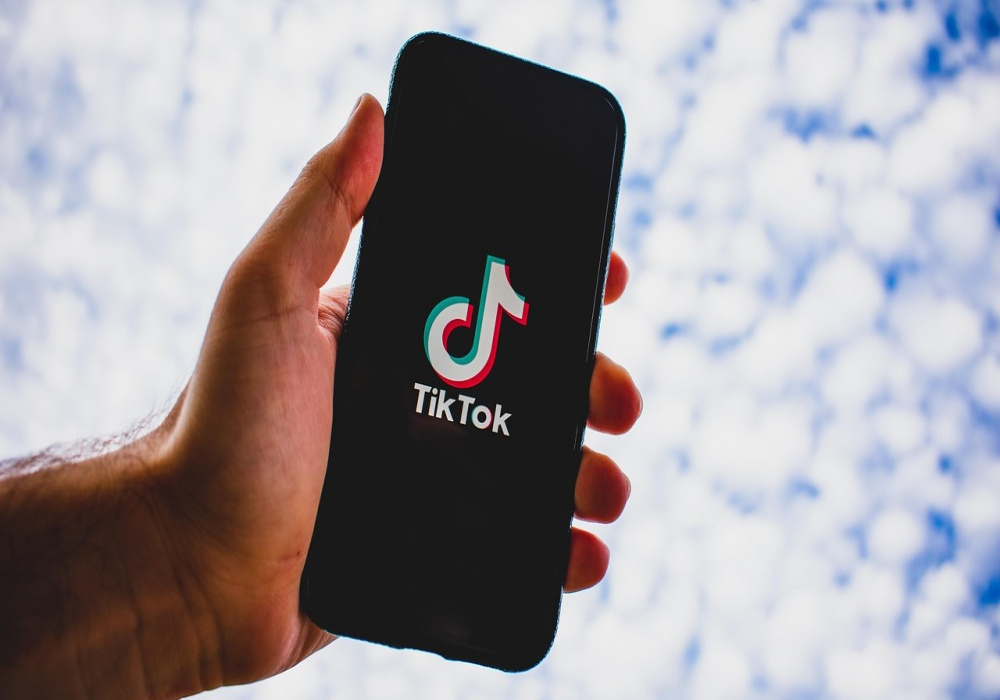
In an era where attention spans are short and social change demands urgency, TikTok has emerged as a powerful new platform for youth-driven activism. What started as a space for dance trends and lip-sync videos has quickly evolved into a vibrant ecosystem where young people are using 15–60 second clips to challenge injustice, raise awareness, and mobilize support for social causes.From climate change protests to gender rights, mental health awareness to political commentary, TikTok’s short-form video format has proven uniquely suited to sparking dialogue and capturing the emotions behind movements. Activists across Bangladesh, India, the Philippines, and beyond are using the platform not just for expression — but for education and mobilization. One powerful example includes the #StudentVoices movement in Bangladesh, where students shared videos demanding reforms in the education system, including calls for more inclusive policies and better mental health support in schools. These clips went viral, sparking mainstream media attention and responses from education officials. Similarly, during the Rohingya refugee crisis or after environmental disasters, TikTokers in South Asia created donation drives, fact-based explainers, and firsthand videos from affected zones — showing the platform’s potential for real-time grassroots journalism. In Manila, a TikTok series debunking election misinformation was viewed over 4 million times, mostly by first-time voters.However, this new wave of digital activism is not without challenges. Critics argue that “slacktivism” — where users feel satisfied simply by liking or sharing posts — may replace real-world engagement. There’s also concern about misinformation, content censorship, and the potential misuse of algorithms that may suppress marginalized voices. Despite these concerns, educators and social researchers recognize TikTok’s potential as an entry point for civic education and social awareness. Many NGOs and advocacy groups now collaborate with TikTok creators to reach younger demographics with accurate, inspiring, and mobilizing content.With over 1 billion users globally, and over 60% under the age of 30, TikTok is not just shaping how youth consume content — it’s shaping how they participate in the world. As digital native generations come of age, their activism is taking new forms — and TikTok, for all its controversies, is proving to be one of their loudest megaphones.
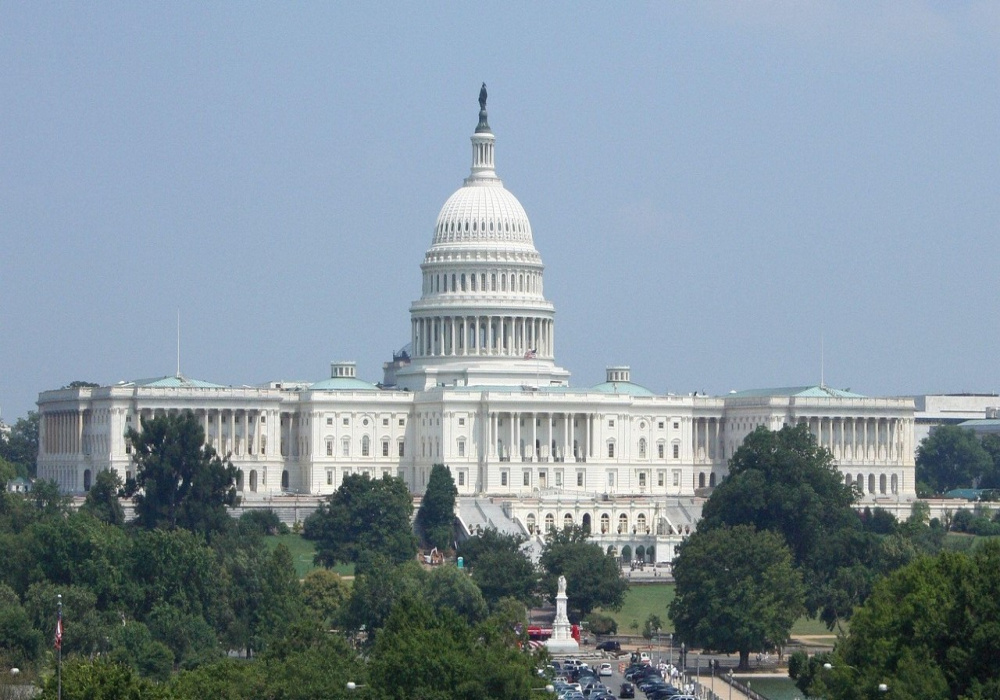
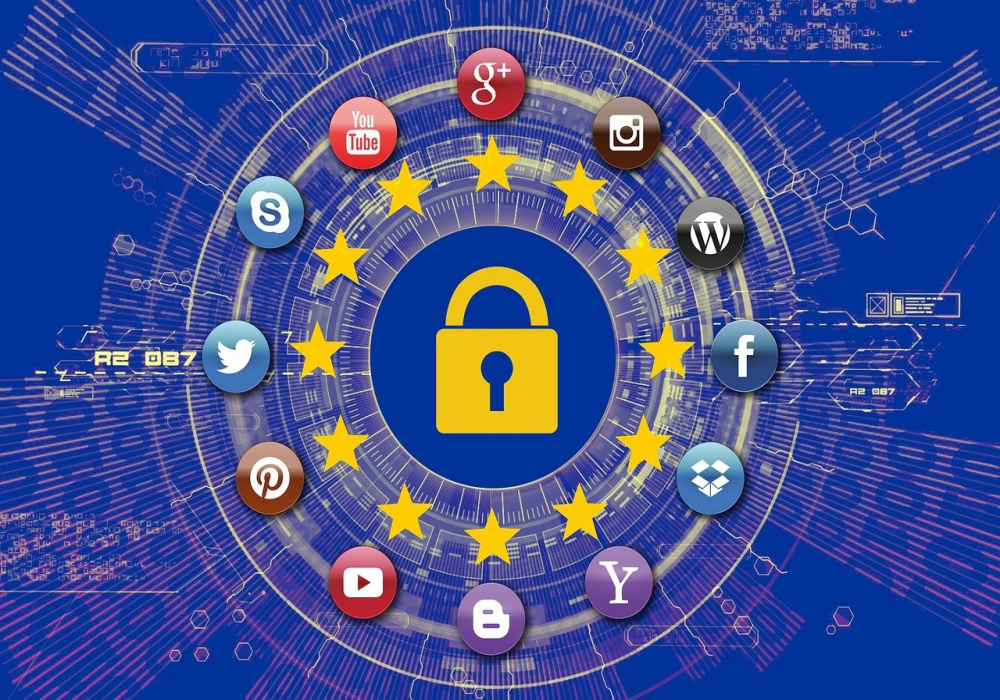


Dhaka – In 2025, social media has evolved far beyond entertainment and status updates — it's now a booming hub for business, employment, and personal branding. From job seekers to entrepreneurs, millions are using platforms like LinkedIn, Facebook, TikTok, and Instagram to generate income and build careers in the digital economy. With the growth of freelancing and e-commerce, social media has become the new résumé for many in Bangladesh and around the world. Online platforms now serve as digital offices, marketplaces, and career development spaces, offering both opportunities and challenges in the rapidly changing job landscape. LinkedIn, once limited to corporate professionals, is now attracting students, freelancers, and small business owners. Job postings, networking groups, and skill-building videos are seeing record engagement. In Bangladesh alone, LinkedIn users have crossed 7 million, with many companies hiring directly through the platform. “I got my last two projects through LinkedIn,” said Arafat Rahman, a freelance graphic designer from Khulna. “I don’t need an agency — just a strong profile and a portfolio online.” Meanwhile, Facebook and Instagram are fueling the rise of small online businesses. According to a report by the e-Commerce Association of Bangladesh (e-CAB), over 500,000 small businesses now operate via social media, many run by women, students, and rural entrepreneurs. “The demand for digital marketing skills has exploded,” said Tanima Haque, who runs a digital training center in Rajshahi. “Young people are learning SEO, video editing, and social media management because these are real, bankable skills today.” The phenomenon of content creators or influencers has also grown into a full-fledged profession. From YouTubers and TikTokers to Instagram vloggers, creators are partnering with brands and earning through sponsored content, affiliate marketing, and live streams. Some are even launching their own product lines and mobile apps. But the trend has its drawbacks. Experts warn of rising competition, burnout, and income instability in the influencer economy. Platforms frequently change their algorithms, making it hard for creators to maintain steady reach and engagement. “There is a dark side to social media fame,” said Dr. Tasfia Nawar, a media analyst. “Many creators feel pressure to constantly produce content and stay relevant, which affects their mental health.” In response, several startups are building tools to help digital workers better manage income, track analytics, and protect their well-being. Government initiatives are also catching up. The ICT Division of Bangladesh has launched new training programs to promote youth employment through digital platforms, especially in rural areas. Some universities have even added social media and digital entrepreneurship courses to their curriculum. As the lines blur between personal and professional life, experts stress the need for digital ethics, transparency, and financial literacy in this new era of online careers. “Social media is no longer optional,” said Imran Kabir, a career coach in Dhaka. “If you’re not on it, you’re invisible — but you also need to know how to use it wisely.” With digital connectivity growing every day, social media isn’t just shaping how people communicate — it’s reshaping how people work, earn, and dream in the 21st century.




In a major shift in marketing strategy, small and medium businesses are now spending more on social media advertising than on traditional print, radio, or even TV ads, according to a new global report by StatMarket Insights. The report shows that over 68% of marketing budgets for startups and e-commerce businesses are now dedicated to platforms like Facebook, Instagram, TikTok, and LinkedIn. “This is where the customers are,” said Ruhul Amin, CEO of Dhaka-based clothing brand UrbanThreads. “We used to do billboards and newspaper ads, but a viral TikTok video now gives us more sales than a month’s worth of offline promotion.” Major platforms have introduced advanced AI targeting tools, allowing small businesses to reach hyper-specific audiences, track conversions in real-time, and adjust their campaigns instantly. However, the rising cost of paid ads and competition for visibility are challenges for smaller brands with limited budgets.




Here are hints and the answers for the NYT Connections: Sports Edition puzzle for Dec. 26, No. 459.

Here are the answers for The New York Times Mini Crossword for Dec. 26.

Everyone in the family deserves a phone plan that works for them. We looked at plans from Verizon, T-Mobile and AT&T to find our picks.

Here are hints and answers for the NYT Strands puzzle for Dec. 26, No. 663.

Here are some hints and the answers for the NYT Connections puzzle for Dec. 26 #929

Here are hints and the answer for today's Wordle for Dec. 26, No. 1,651.

Don't know what to watch? Dig through these Netflix movie picks that span every genre.

The $418 Smartlet literally bridges the gap between your elegant analogy and your nerdy smartwatch.
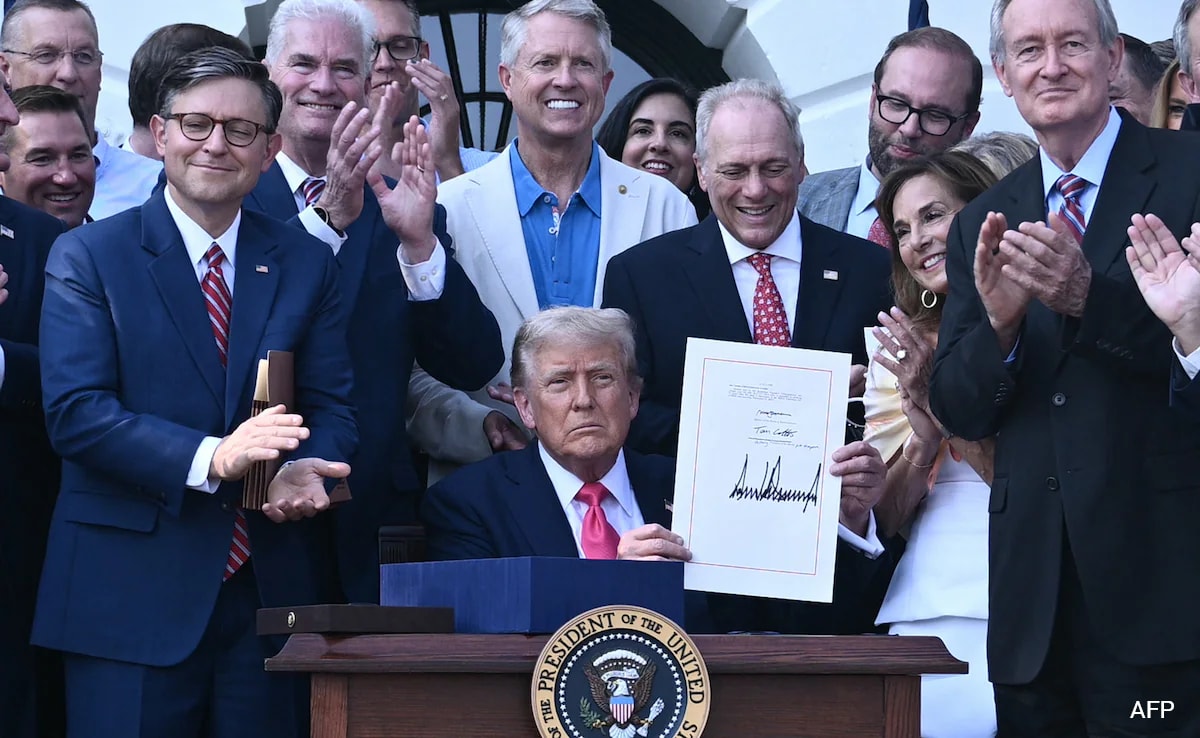
Numerous bills were passed around the world throughout 2025. However, some of them ignited fierce debates, with some citizens and opposition leaders expressing concerns over rights, security, and economics against national priorities.

The US Embassy in India has issued an advisory against fraudulent messages and agents offering guaranteed visas or quick approvals.
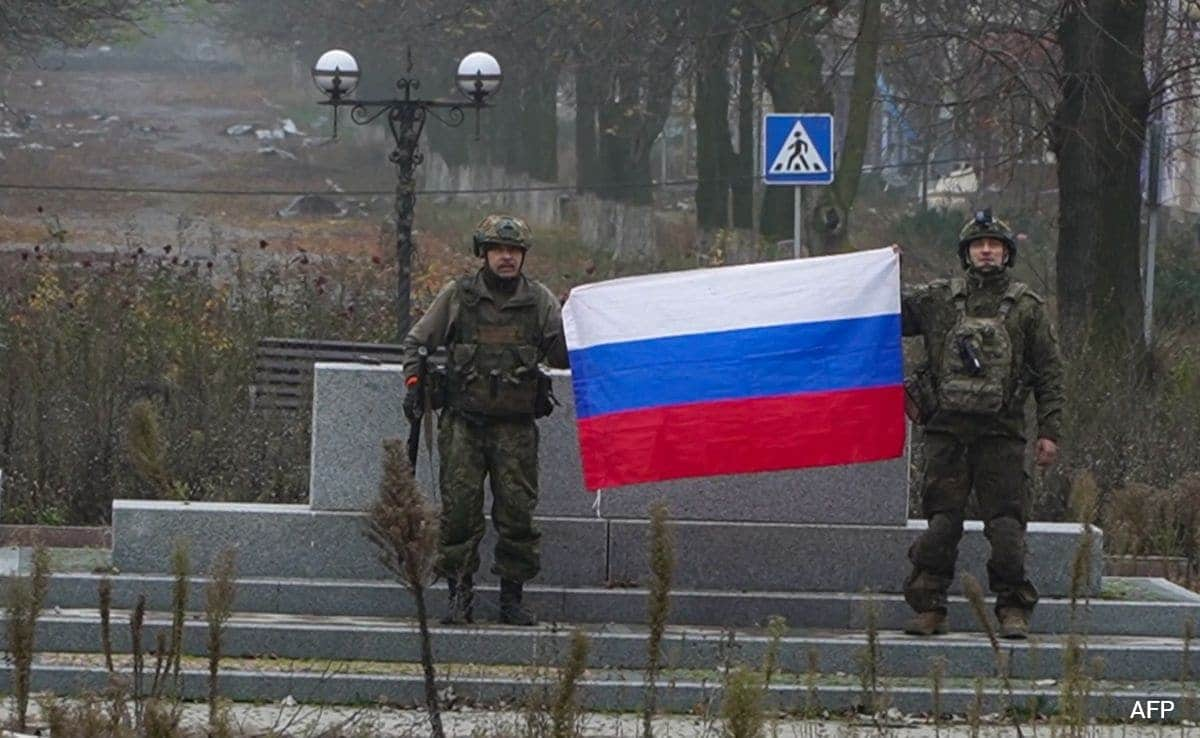
Carol of the Bells, the iconic Christmas song from Home Alone, is in the spotlight, not for the festive cheer but for Russian forces destroying the Ukrainian city where its composer, Mykola Leontovych, once lived.
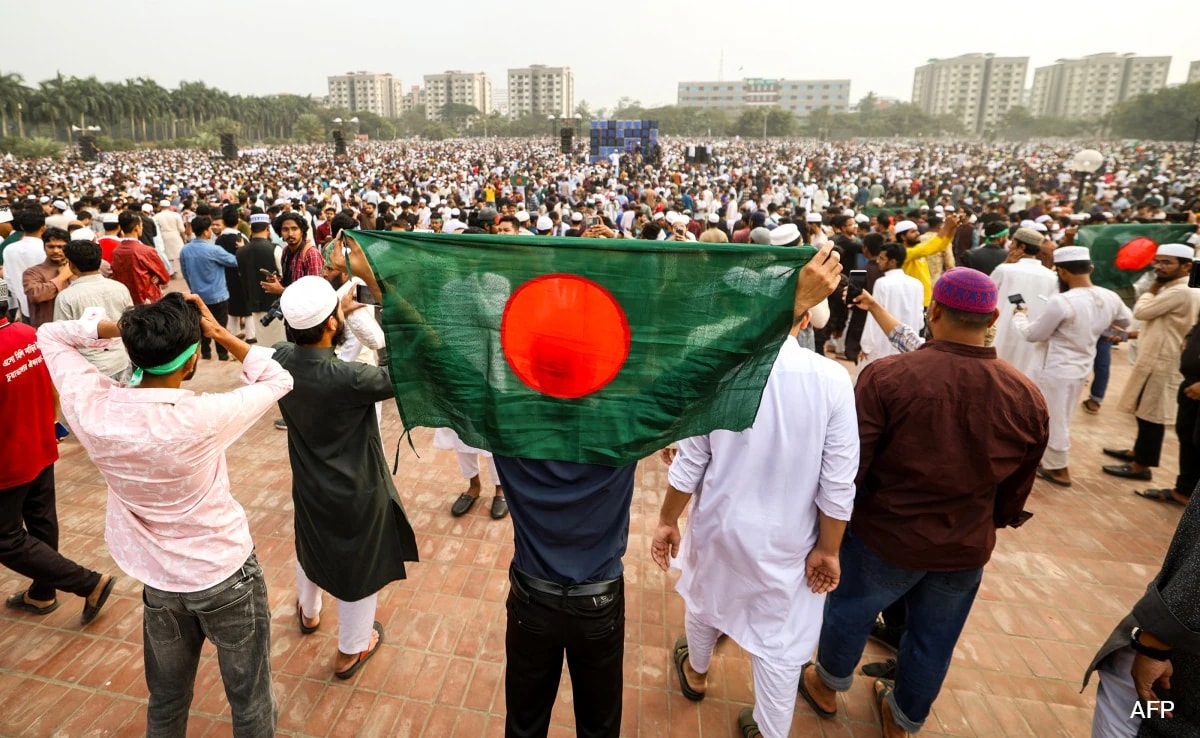
Bangladesh Crisis LIVE: Another Hindu man has been beaten to death in Bangladesh, days after Dipu Chandra Das was lynched and his body was set ablaze, local media reported on Thursday.

Christmas Day saw the triumphant homecoming of Bangladesh's 'dark prince' - Tarique Rahman, the son of three-time former Bangladesh Prime Minister Khaleda Zia and a central figure in her Bangladesh Nationalist Party - after 17 years in self-exile.
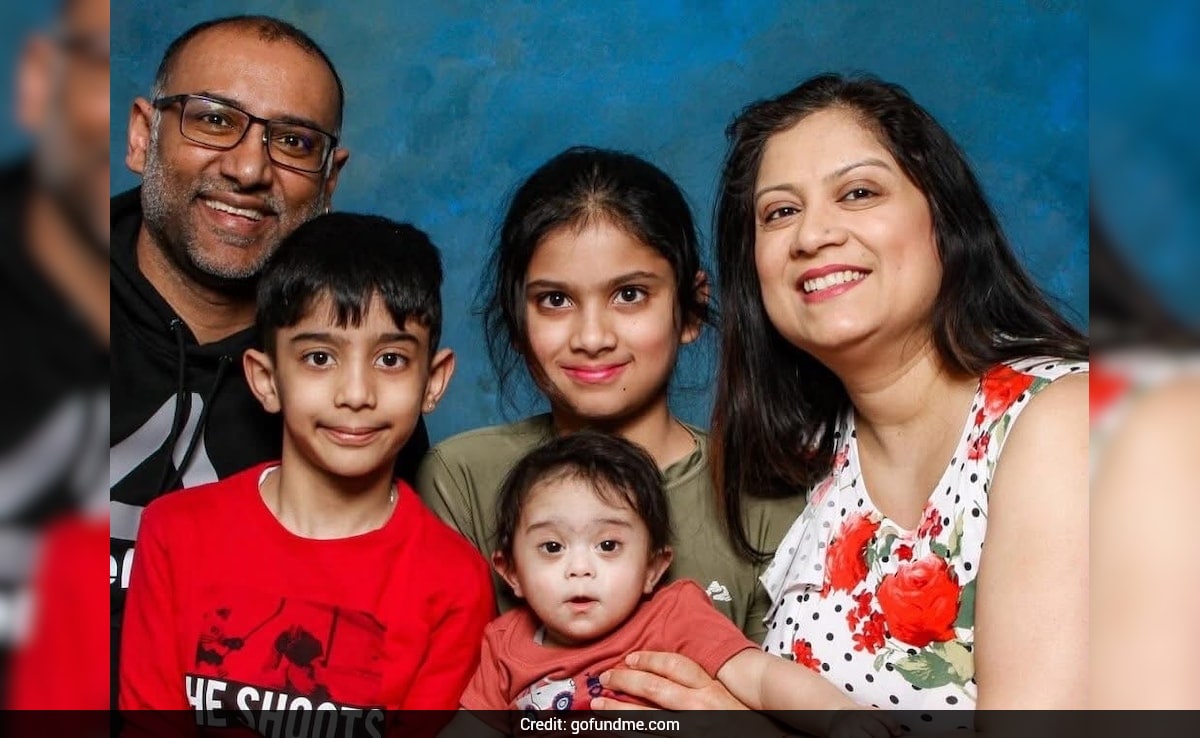
Days after Prashant Sreekumar, a 44-year-old Indian-origin man, died of suspected cardiac arrest while waiting for treatment at Grey Nuns Community Hospital in Canada's Edmonton, a video of his wife has gone viral.
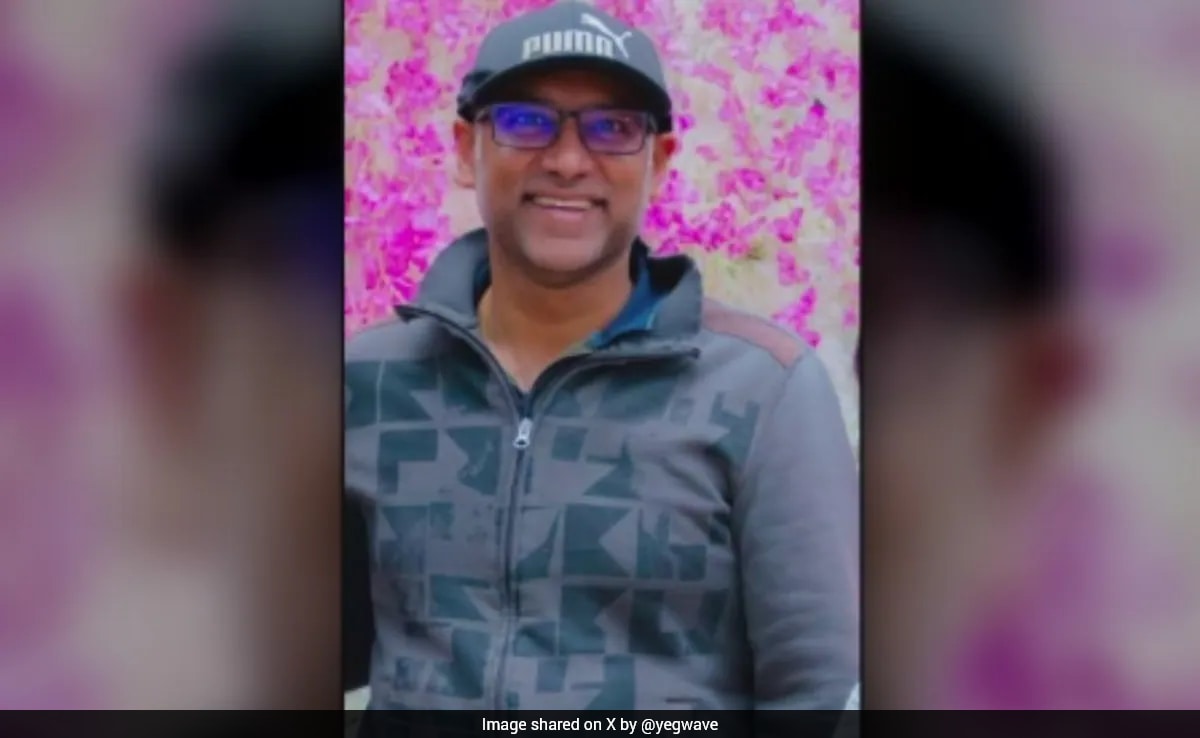
A 44-year-old Indian-origin man has died of suspected cardiac arrest after he reportedly did not receive any treatment for several hours at a hospital in Canada.

Jeffrey Epstein took nude photos and negatives without permission and was believed to have sold the pictures to potential buyers, according to reports.

Catch a lush Monet blockbuster, gorgeous Egyptian goddesses and the history of Black Broadway before they’re gone.

A spotty but thrilling tour of American art from Eisenhower to Nixon shows just how unhinged the ’60s were, and how hard it is to summarize the era.
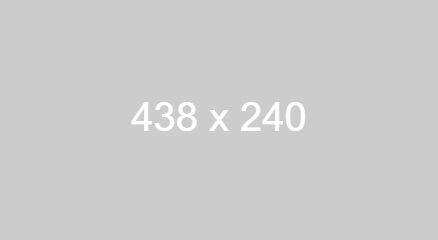
Daniya Stambekova has won fans by finding the Beavis or Butt-Head within the most attractive influencers.

How a movement went from dreamworld to vanguard to establishment of its own.

A major player in the block-trading boom, he left Wall Street for the art world, winning a Jeff Koons sculpture at auction for $91 million in 2019.

For generations, Italian craftspeople have built scenes depicting Jesus’ birth, sometimes including figures of celebrities. This year, some are adding statuettes of President Trump.

Two new London murals, widely attributed to the mysterious street artist, combine seasonal themes with what appears to be social commentary on rising child homelessness in Britain.

For prizewinning puzzle creators, the devilish ideas are in the details.

भोपाल मध्य प्रदेश में ठंड और कोहरे का असर लगातार बना हुआ है। प्रदेश (MP Weather Update) के हिल स्टेशन पचमढ़ी में शुक्रवार सुबह न्यूनतम तापमान 4.2°C दर्ज हुआ। भोपाल में 7°C, इंदौर, उज्जैन और जबलपुर में 9°C के आसपास तापमान रिकॉर्ड किया गया। प्रदेश के कई जिलों में सड़कों पर घना कोहरा छाया रहा, …

तिरुवनंतपुरम इंडिया वुमेंस वर्सेस श्रीलंका वुमेंस 5 मैच की टी20 सीरीज का तीसरा मुकाबला आज तिरुवनंतपुरम के ग्रीनफील्ड इंटरनेशनल स्टेडियम में खेला जाना है। सीरीज में 2-0 से आगे चल रही हरमनप्रीत कौर की टीम की नजरें जीत की हैट्रिक लगाते हुए सीरीज में अजेय बढ़त बनाने पर होगी। पहले दो मुकाबलों में भारतीय खिलाड़ियों …

वाशिंगटन पाकिस्तान के परमाणु संयंत्र को लेकर पश्चिमी देशों और रूस की चिंता नई नहीं है। अब इस पर मुहर लगाती हुई अमेरिकी नेशनल सिक्योरिटी आर्काइव की गोपनीय जानकारी साझा की गई हैं। आर्काइव की तरफ से 2001 से लेकर 2008 के बीच रूस के राष्ट्रपति व्लादिमीर पुतिन और अमेरिका के राष्ट्रपति जॉर्ज डब्ल्यू बुश …

नईदिल्ली Amazon, Zomato, Zepto, Blinkit, Swiggy और Flipkart जैसे बड़े फूड डिलीवरी और ऑनलाइन शॉपिंग प्लेटफॉर्म्स से जुड़े डिलीवरी वर्कर्स ने 31 दिसंबर 2025 को देशभर में हड़ताल का ऐलान किया है। इन कर्मचारियों का कहना है कि यह फैसला कंपनियों पर दबाव बढ़ाने के लिए उठाया गया है क्योंकि यूनियनों के मुताबिक गिग इकोनॉमी …

कलकत्ता पश्चिम बंगाल की राजनीति तेजी से गरमा रही है। इसका सबसे बड़ा कारण है कि अगले साल राज्य में विधानसभा चुनाव होना है। मुख्यमंत्री ममता बनर्जी के लिए यहां सत्ता बचाने की चुनौती है। वहीं, भारतीय जनता पार्टी (BJP) यहां पहली बार सरकार बनाने तमन्ना लिए बैठी है। इस सबके बीच चुनावी बिसात पर …

टोरंटो कनाडा के टोरंटो शहर में यूनिवर्सिटी ऑफ टोरंटो स्कारबोरो (UTSC) परिसर के पास गोलीबारी में 20 साल के एक भारतीय छात्र शिवांक अवस्थी की मौत हो गई। यह घटना टोरंटो में भारतीय नागरिकों से जुड़ी दूसरी गंभीर हिंसक वारदात के कुछ ही दिनों बाद सामने आई है। इससे पहले हाल ही में 30 वर्षीय …

सिडनी ऑस्ट्रेलिया और इंग्लैंड के बीच खेली जा रही पांच मैचों की एशेज सीरीज के चौथे टेस्ट मैच के पहले दिन ऑस्ट्रेलिया 152 रनों के स्कोर पर ऑलआउट हो गई है। मैच के पहले दिन इंग्लैंड के गेंदबाजों का कहर देखने को मिला है। इंग्लिश गेंदबाज जोश टंग ने 5 विकेट हासिल किए हैं। वहीं, …

मध्य प्रदेश के आगर-मालवा जिले में स्थित बैजनाथ महादेव मंदिर का एक अनूठा इतिहास रहा है. ये मंदिर आगर-मालवा के सुसनेर रोड पर स्थित है, जोकि जिले के प्रमुख पर्यटन और धार्मिक स्थलों में से एक है. मंदिर के शिखर की ऊंचाई लगभग 50 फीट है. यह भारत का एकमात्र मंदिर है जिसका अंग्रेजों ने …